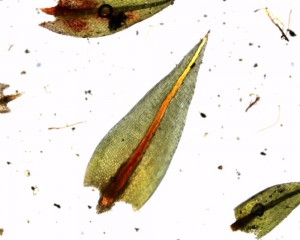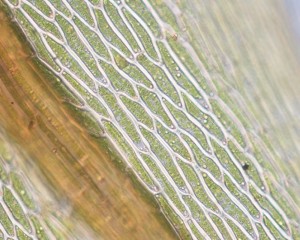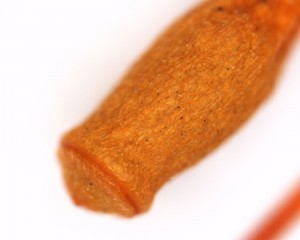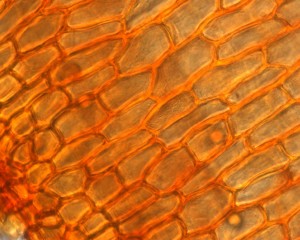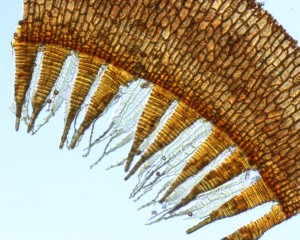Habitat
Pohlia nutans is distributed across the Northern Hemisphere and is able to grow from sea-level all the way up to alpine elevations. It extends from North America southward to Mexico, although rarely seen there (). It is commonly found growing on mineral or humus soils as well as on rotting logs in sites that are somewhat shaded to sunny ().
Gametophyte
Overall structure:
This species tends to form small and dense turfs. Although they can range in color from light to dark green, typically the upper part of the gametophyte is dark green while the lower part is a light green.
Leaves:
The leaves are spearhead-shaped and the margins are usually slightly denticulate near the apex. The larger upper leaves tend to be crowded near the tips of the shoots. A strong single costa ends at or near the leaf tips.
leaf near apex: note the toothed margins and the strong single costa.
leaf base
leaf cells near the costa
Stem:
The stem of Pohlia nutans is often red near the top and darker in color near the bottom. The stems are rarely branching.
Rhizoids:
There can be few to many rhizoids, which are brown and found on the bottom of the stem.
Male gametophyte:
The antheridia are located in the axils of the upper leaves. Each axil houses a pair of antheridia.
Sporophyte
Overall structure:
The sporophytes of this species are commonly present during the summer.
Sporangium:
The nodding sporangium is generally light red-brown in color and non-glossy.
sporangium with operculum
exothecial cells
peristome teeth
Seta:
The seta, which range from 2-5 cm long, is typically red when young and becomes brown as it matures.


